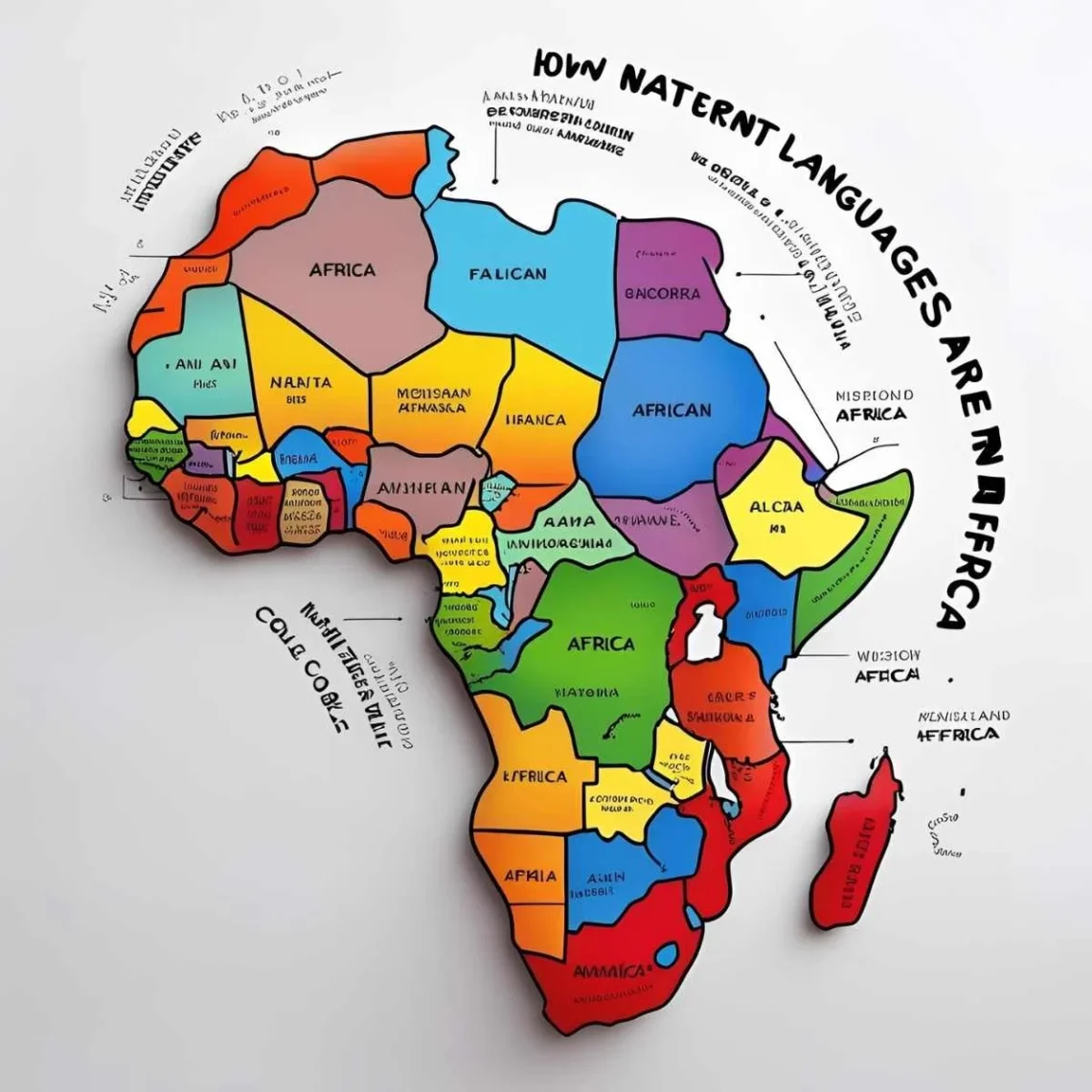Picture a bustling market in Lagos, where vendors call out in Yoruba, Hausa, and English, their voices blending into a vibrant symphony. This scene captures the essence of Africa’s linguistic richness, where a simple greeting can shift from “sawa” in Swahili to “o da” in Yoruba within moments.
With estimates ranging from 1,500 to over 3,000 languages, Africa is a linguistic mosaic, reflecting its diverse cultures and histories. Each language tells a story of community, tradition, and resilience, uniting people across the continent’s vast landscapes.
Let’s embark on a journey to explore how many languages thrive in Africa and what they reveal about its cultural heartbeat.
Reference Table: Major African Languages
| Language | Family | Countries | Speakers (Approx.) | Cultural/Linguistic Insight |
|---|---|---|---|---|
| Swahili | Niger-Congo (Bantu) | Kenya, Tanzania, Uganda | 50–100M | A lingua franca, blending Bantu and Arabic influences. |
| Hausa | Afroasiatic (Chadic) | Nigeria, Niger | 50M | A trade language with rich oral literature. |
| Yoruba | Niger-Congo | Nigeria, Benin | 40M | Known for its tonal system and cultural proverbs. |
| Amharic | Afroasiatic (Semitic) | Ethiopia | 32M | Uses a unique Ge’ez script, tied to Ethiopia’s heritage. |
| Zulu | Niger-Congo (Bantu) | South Africa | 12M | Features click consonants, rooted in Nguni culture. |
| Oromo | Afroasiatic (Cushitic) | Ethiopia, Kenya | 37M | A major language with diverse dialects. |
| Arabic | Afroasiatic (Semitic) | Egypt, Algeria, Morocco | 150M | Official in many North African nations, tied to Islam. |
| Berber | Afroasiatic | Morocco, Algeria | 16M | Spoken in Tamazight dialects, tied to indigenous identity. |
| Fulani | Niger-Congo | Nigeria, Senegal | 25M | Spoken by nomadic pastoralists across West Africa. |
| Igbo | Niger-Congo | Nigeria | 27M | Known for its complex tonal system and proverbs. |
| Shona | Niger-Congo (Bantu) | Zimbabwe, Zambia | 14M | Central to cultural storytelling in Southern Africa. |
| Nama | Khoisan | Namibia, Botswana | 250,000 | Uses click consonants, at risk of extinction. |
| Luo | Nilo-Saharan | Kenya, Tanzania | 4M | Spoken by the Luo people, tied to oral traditions. |
| Malagasy | Austronesian | Madagascar | 18M | Reflects Southeast Asian migration to the island. |
| Sango | Ubangian | Central African Republic | 5M | A creole-based lingua franca, widely used. |
European Languages: Colonial Echoes in Africa
While not native, European languages like English, French, and Portuguese are widely spoken in Africa due to colonial history. For instance, English, official in 27 countries like Nigeria and Kenya, serves as a lingua franca, used in education and government. Similarly, French, spoken in 21 countries such as Senegal and the Democratic Republic of Congo, is a legacy of French colonization, often used in urban settings. Meanwhile, Portuguese, official in six nations like Angola and Mozambique, reflects Portugal’s historical influence. Additionally, Afrikaans, derived from Dutch, is spoken in South Africa and Namibia, blending European and African linguistic elements. These languages, used across over 20 countries, highlight Africa’s complex colonial past while facilitating cross-cultural communication.
African Languages: A Continent’s Linguistic Heart
Africa’s indigenous languages, estimated at 1,500–3,000, are grouped into four major families: Niger-Congo, Afroasiatic, Nilo-Saharan, and Khoisan. For example, Swahili, a Niger-Congo Bantu language, is spoken in over 20 countries like Tanzania and Kenya, serving as a trade and cultural bridge with its Arabic-influenced vocabulary. Hausa, an Afroasiatic language in Nigeria and Niger, is spoken by 50 million, known for its role in commerce and media. Similarly, Yoruba, a Niger-Congo language in Nigeria, uses a tonal system and is rich in proverbs, reflecting communal values. Zulu, another Bantu language, features click consonants and is central to South Africa’s cultural identity. Amharic, an Afroasiatic language in Ethiopia, uses the Ge’ez script, tying it to ancient traditions. These languages, spoken across diverse regions, embody Africa’s cultural depth and communal spirit.
Indigenous & Island Languages: Unique Voices
Africa’s indigenous and island languages add distinct threads to its linguistic tapestry. For instance, Nama, a Khoisan language in Namibia and Botswana, uses click consonants and is spoken by about 250,000, though it faces extinction risks. Similarly, Luo, a Nilo-Saharan language in Kenya and Tanzania, is tied to oral storytelling among the Luo people. In Madagascar, Malagasy, an Austronesian language, reflects ancient Southeast Asian migrations, spoken by 18 million. Sango, a creole-based Ubangian language in the Central African Republic, serves as a lingua franca, blending African and European elements. These languages, used in diverse communities, highlight Africa’s unique linguistic heritage, often preserved through oral traditions.
Cultural Insights: The Evolution of Africa’s Languages
Africa’s languages have evolved through migration, trade, and colonization. For example, the Bantu migrations (circa 1000 BCE) spread Niger-Congo languages like Swahili and Zulu across sub-Saharan Africa. Meanwhile, Arabic, introduced via Islamic trade from the 7th century, shaped Afroasiatic languages like Hausa. Khoisan languages, possibly the oldest, trace back to ancient hunter-gatherer communities, with click consonants unique to the region. Colonial languages like English and French, imposed from the 19th century, became official in many nations, often sidelining indigenous tongues. However, efforts like the African Union’s 2006 “Year of African Languages” aim to preserve these voices, reflecting Africa’s resilience and cultural pride.
Proverbs and Sayings: Linguistic Wisdom
- Swahili: “Lugha ni kioo cha jamii.” (Language is the mirror of society.) – Reflects language’s role in cultural identity.
- Yoruba: “Ọrọ ni ẹnu ọba.” (Words are the mouth of the king.) – Emphasizes the power of language.
- Hausa: “Harshe shine ruhun al’umma.” (Language is the soul of the community.) – Ties language to communal spirit.
- Zulu: “Ulwimi luyisibuko senkolo.” (Language is a mirror of belief.) – Highlights cultural reflection in words.
- Amharic: “ቋንቋ ልብ ነው።” (Language is the heart.) – Connects language to emotional expression.
FAQs
How many languages are spoken in Africa?
Estimates range from 1,500 to over 3,000, with Nigeria alone hosting over 500 languages, reflecting Africa’s vast diversity.
Why does Africa have so many languages?
Its large size, diverse geography, and long history of human habitation fostered isolated communities, each developing unique languages.
Which language family is the largest in Africa?
Niger-Congo, with around 1,500 languages, is the largest, including Swahili, Yoruba, and Zulu, spoken by over 600 million.
Conclusion
Africa’s linguistic landscape, with 1,500–3,000 languages, weaves a vibrant tapestry of human connection, from Swahili’s “sawa” to Yoruba’s “o da.” Each language, whether Hausa’s trade-driven spread or Nama’s ancient clicks, reflects the continent’s rich history and resilience. Consequently, these voices unite communities, preserving traditions and stories. How does your language or culture express connection? Share your thoughts below—we’re eager to hear your story!





